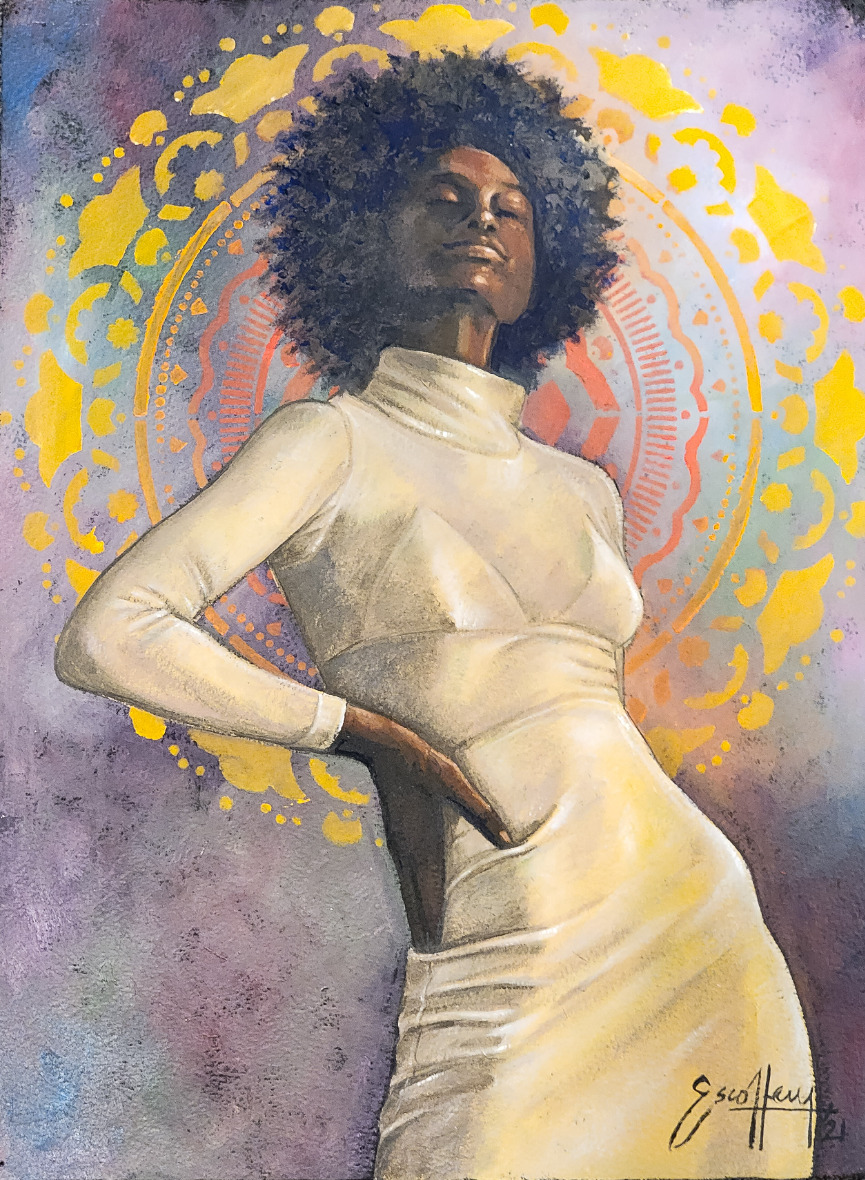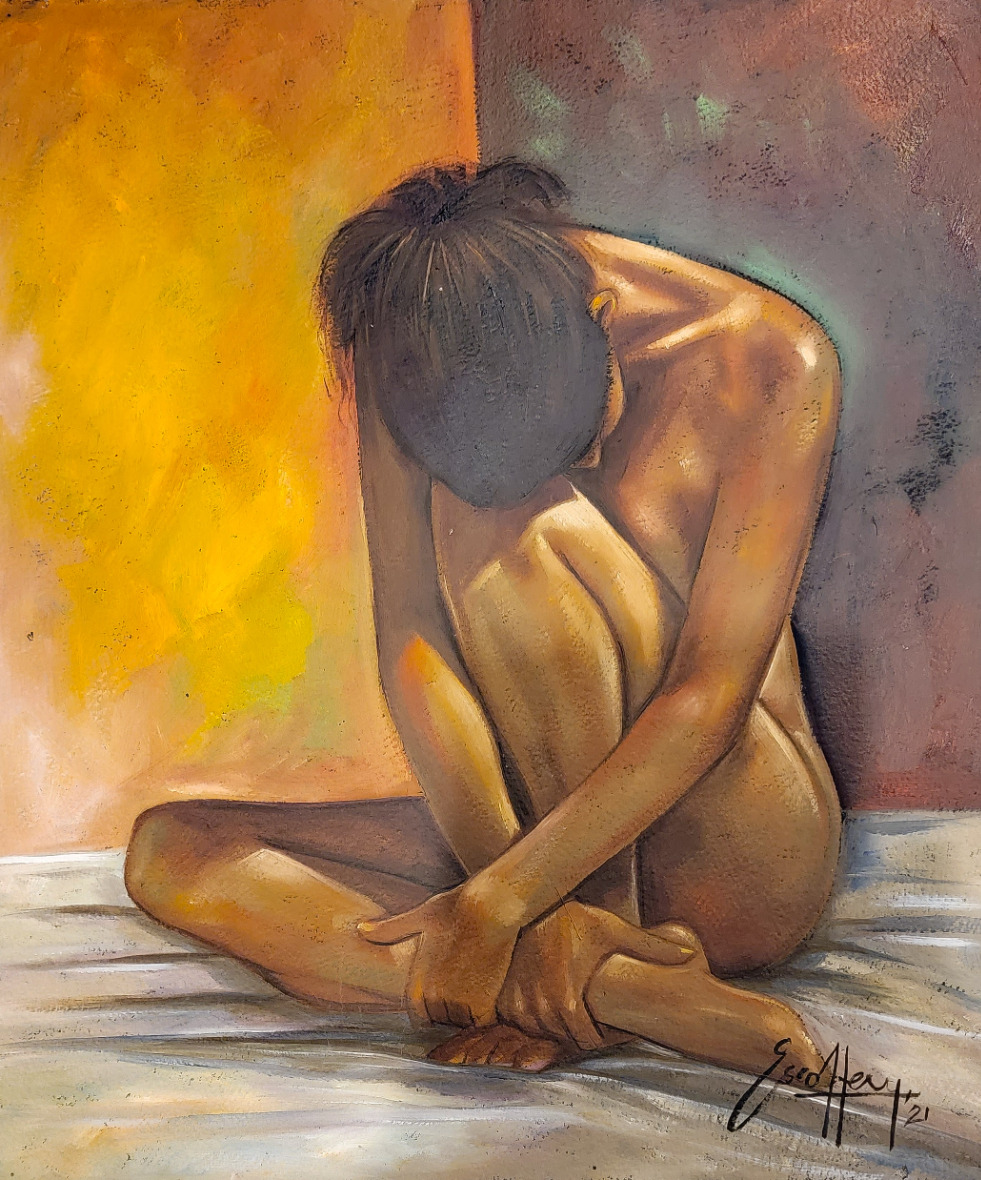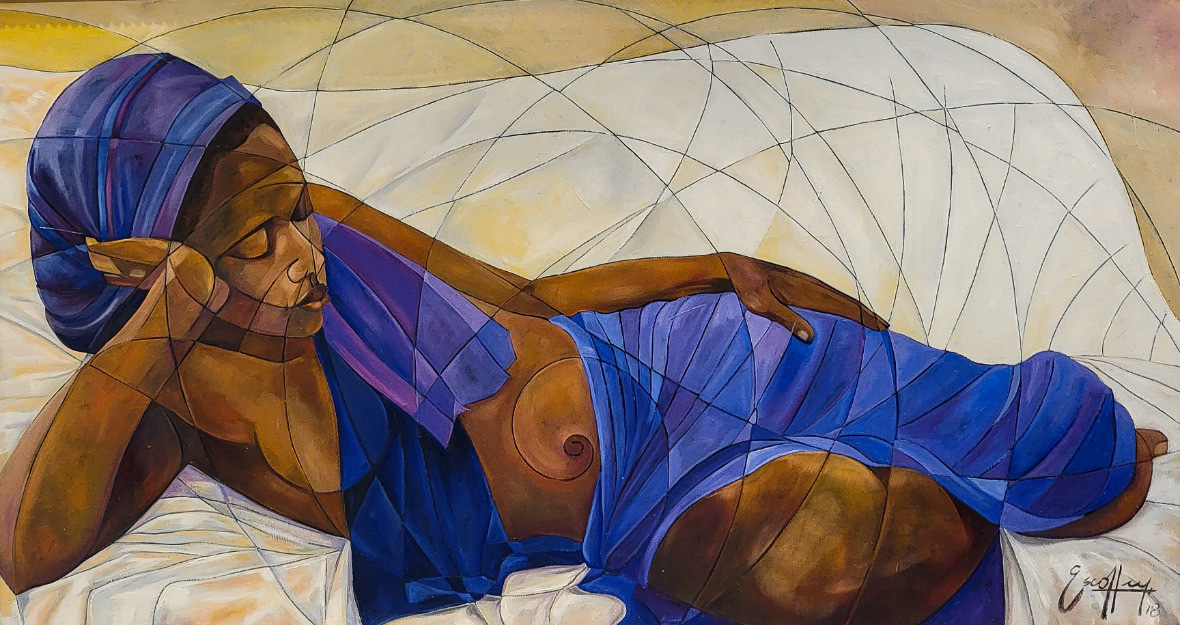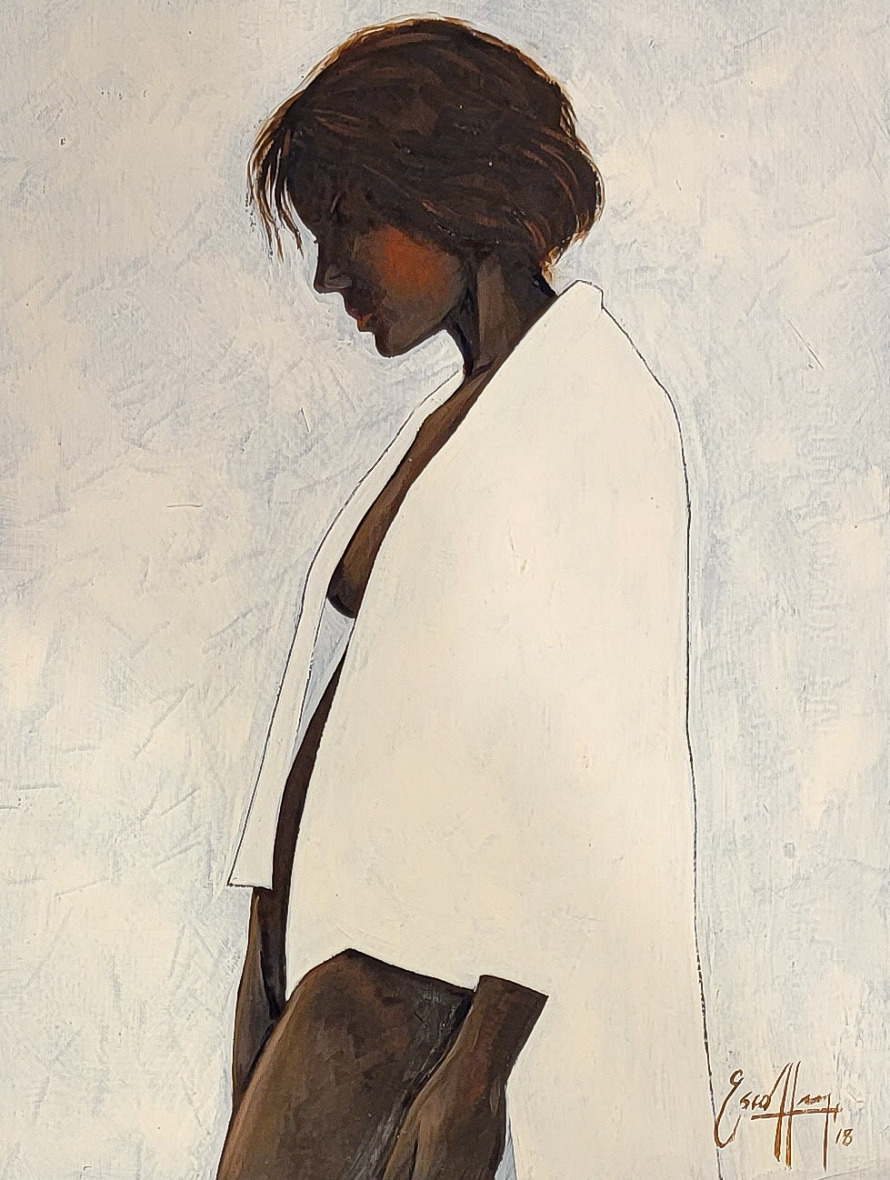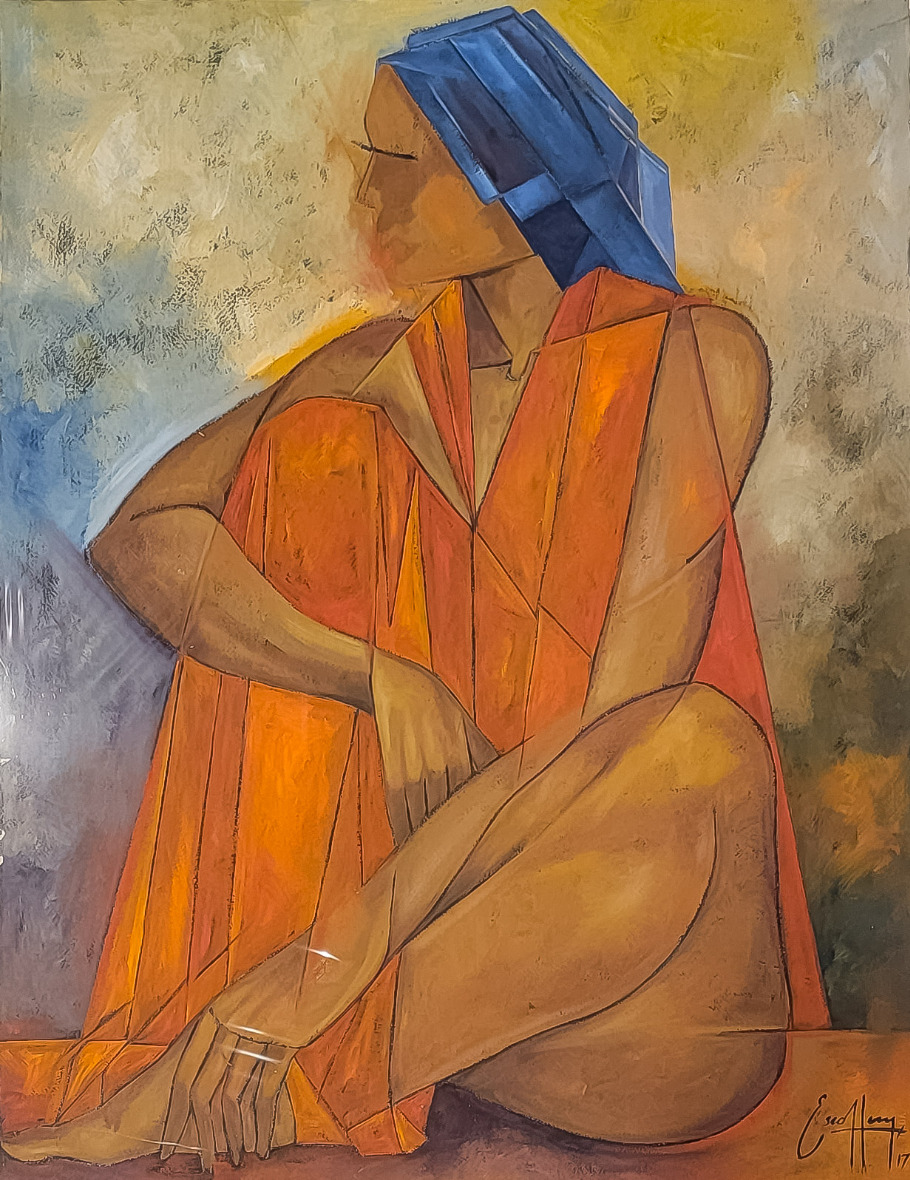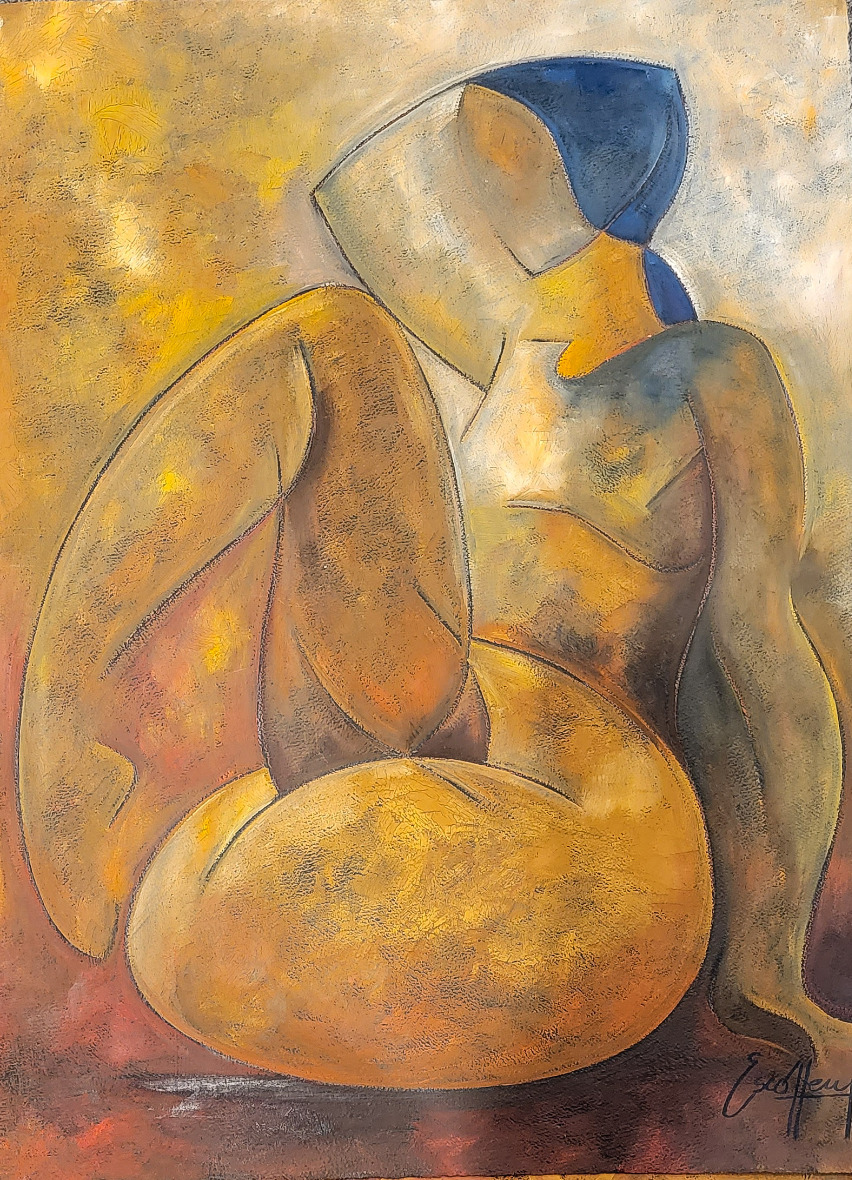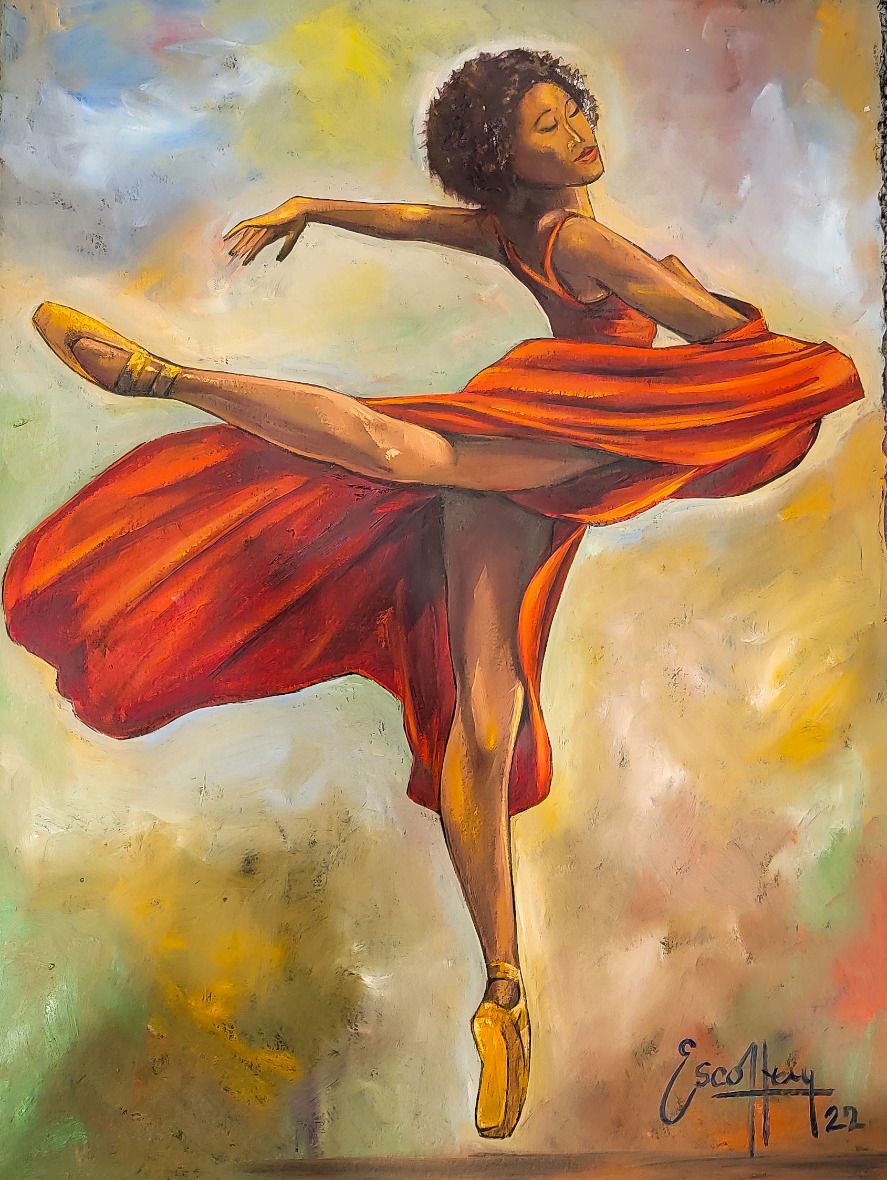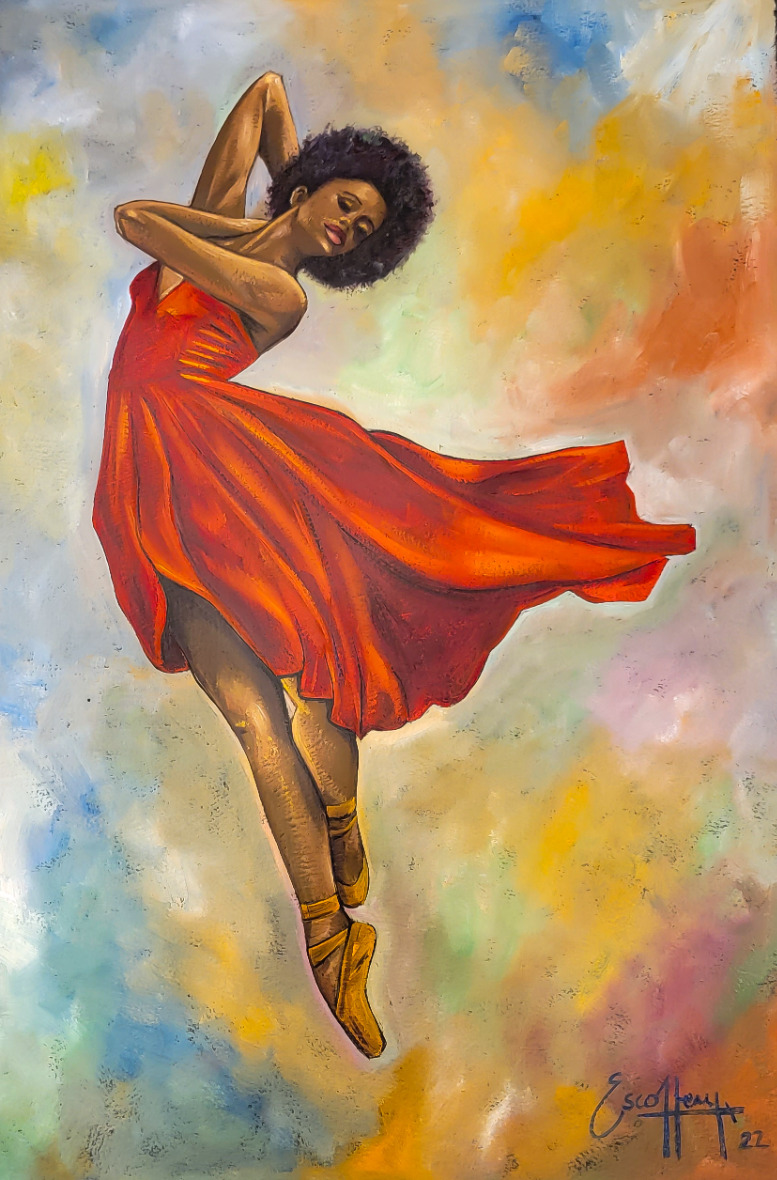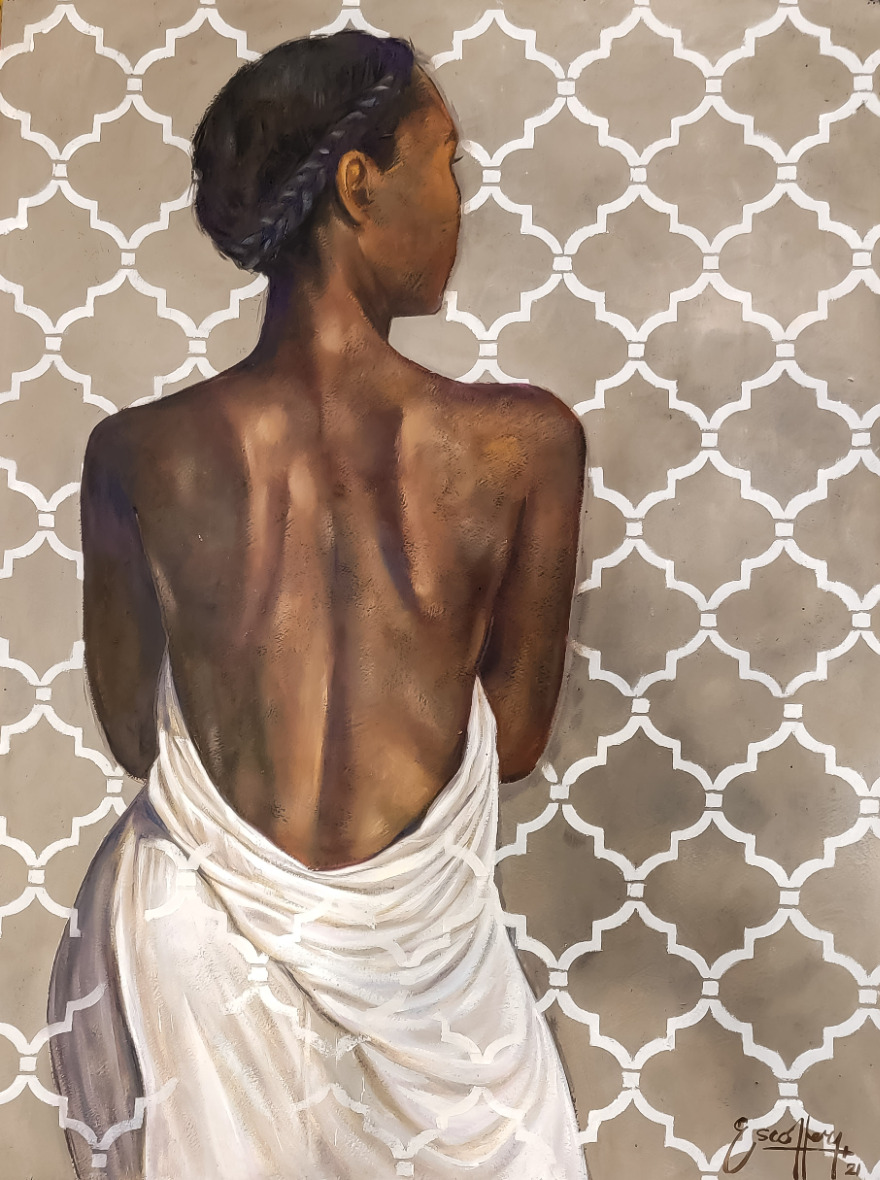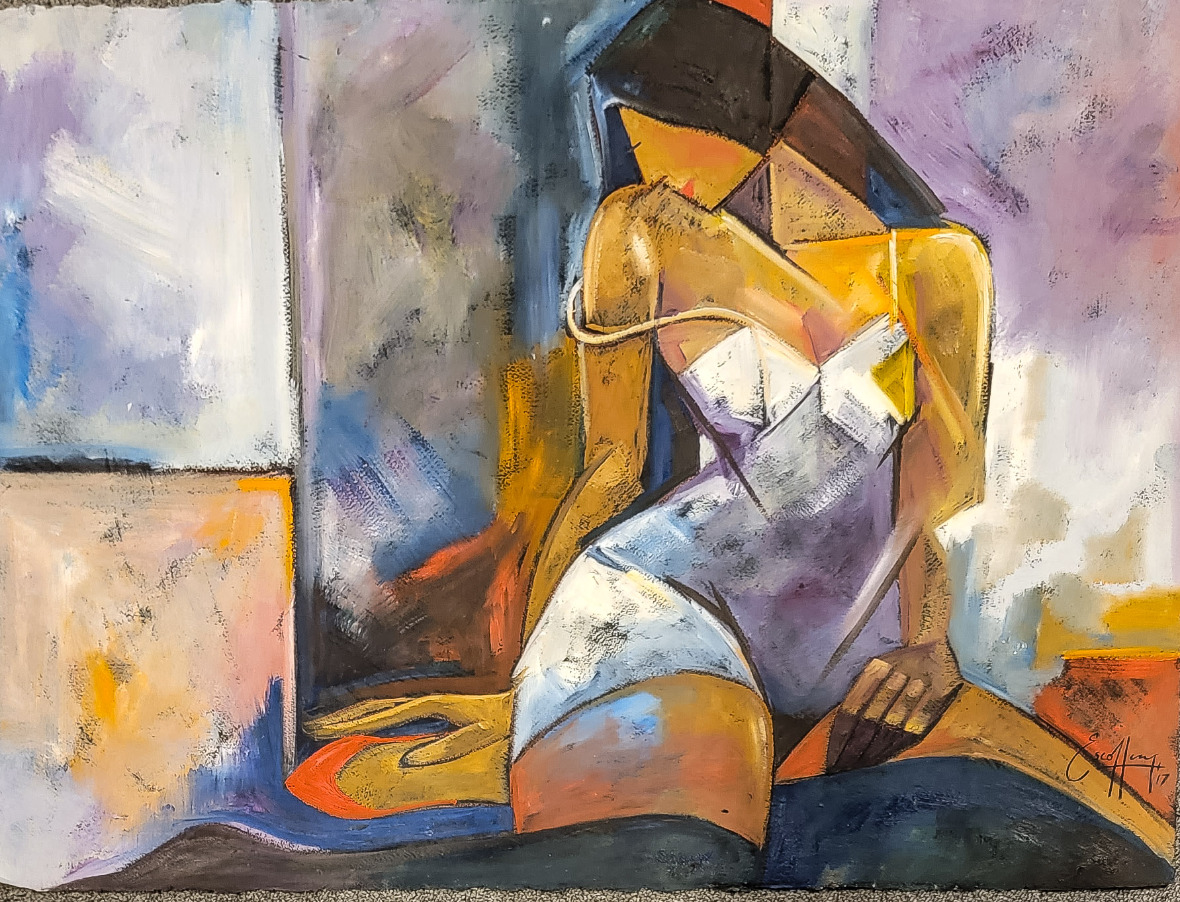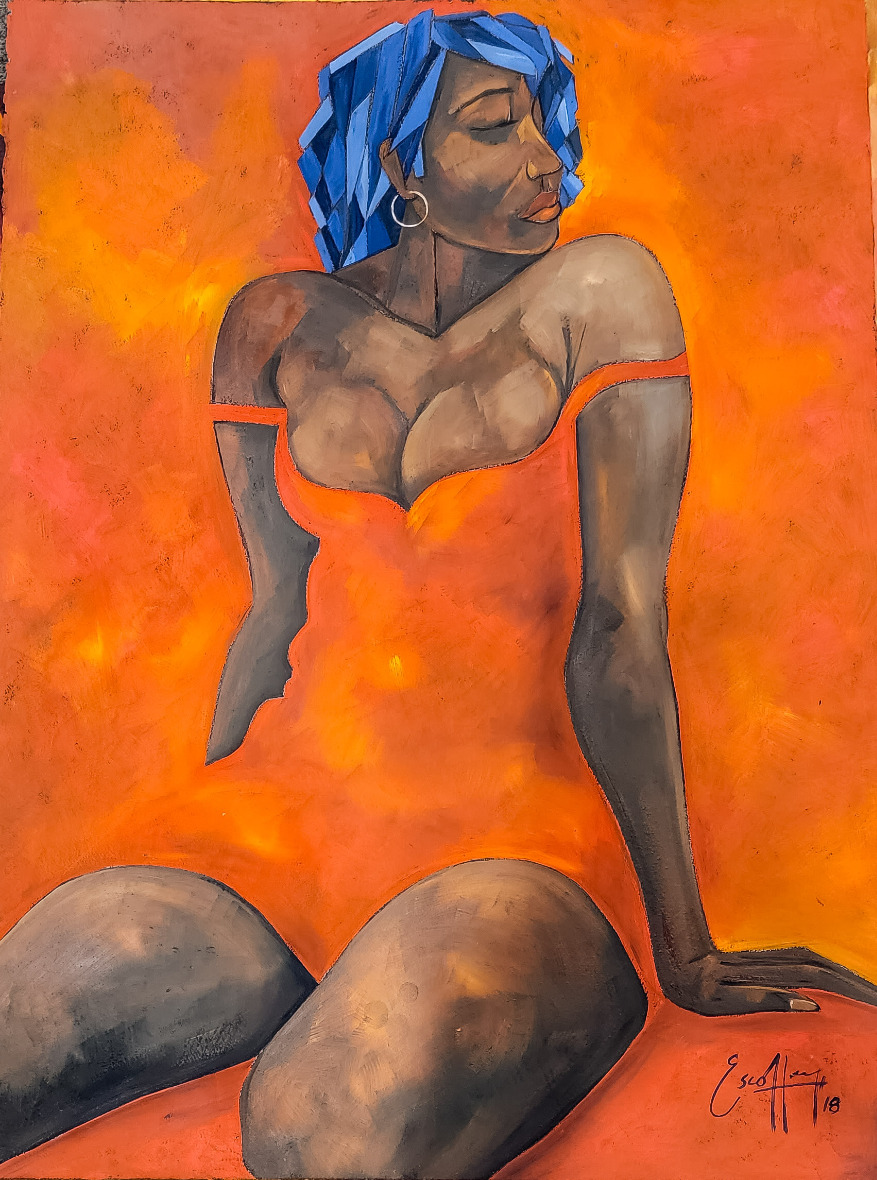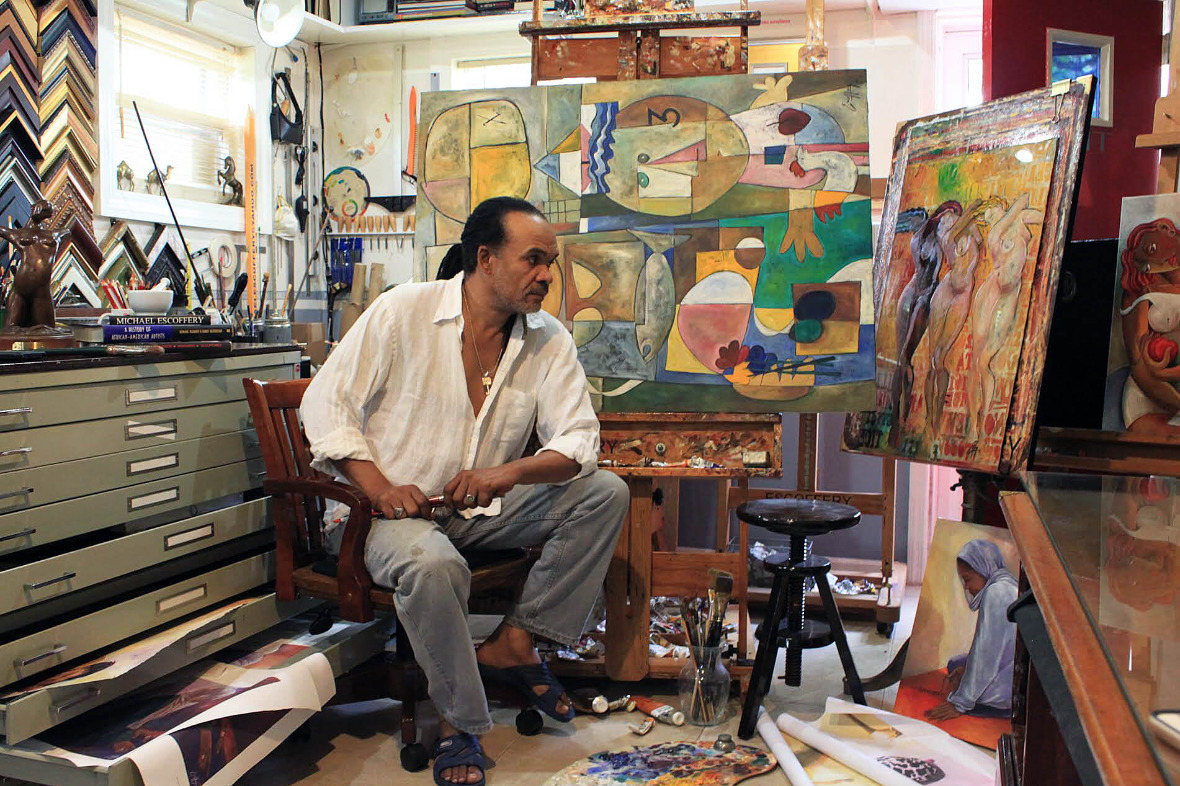
Michael Escoffery
Artists are born with their talents intact. Nurturing exposure to appropriate environments and early training are not quite as certain. Born in Jamaica, Michael Escoffery had the good fortune to be the son of intellectuals whose interest in his future made it possible for him to pursue his proclivities. His parents were students of the celebrated artist Edna Manley, wife of a national hero and mother of a Jamaican Prime Minister. Escoffery considers himself an expatriate still intangibly connected to his birth land. Educated and trained in the unique matrix of African and European cultures that make up the Caribbean Islands, Escoffery’s mission is to create a symbiosis of this cultural heritage and the late 20th century art, as did Wilfred Lam in the mid-20th century.
Escoffery’s subjective itinerary follows an eclectic tradition in the manner of late 19th century artists like Edgar Degas, whose genres varied, but remained a constant source of pictorial content. Believing “there is no absolute visual reality, but rather the coexistence of the [ambiguous] and the real in all we perceive”, Escoffery continues to explore all media and styles for visual connections that link his experiences with the illusionary complexities of American contemporary art. His pictorial content is used as a medium for the manipulation of stylistic formula; inventions to be exploited for his own purposes. It is from this vantage point that his engaging intelligence made it possible for him to use the content of topical issues, and the isms of the late 20th century styles, with impunity. The results are visible in the non-figurative Apartheid, 1989 and Malcolm X, the 1991 series in which Escoffery creates a searing commentary on racial attitudes with his art. Desert Storm, inspired Stars & Stripes of 1991. The series, based on the American Flag, is ingeniously configured and coupled with icons used to challenge its original symbolism.
Compassion has taken form in figurative works and self-portraits, particularly, a probing 1989 image in which Escoffery’s piercing eyes seek refuge behind a compositional arrangement of vertical and diagonal crossbars. The visual dynamic created by the positioning of a small black square and the blackened vertical plane containing his features creates a continuum of repression and impelling need to break out. “Windows of the Mind”, 1989, is a reflection on memory. The work incorporates three nudes behind a scrim of overlapping translucent planes that partially conceal, but do not hide, the emotional bifurcation of the time and involvement. Yet Escoffery, with equal sensibility, softened by a mood of repose, displays the touch of the poet in the serene portrait on paper, of “Josephine Riley Matthews”, 1990.
In 1994, Escoffery explored the visual potential of imaging technology developed for the Internet in two series, “Jazz Musicians and Portraits”. A diversionary style for Escoffery, it was inspired by ‘time’ – the sequence of resolution that engaged and impacted on the artist’s eye. In “Diva”, 1994, the face evolves from squares creating a photographic image. His fineness in exacting the juxtaposition of color and shape remarkably captures the facets, jewel-like quality of au courant processing. The Artist claims non-conformity by resisting the limitations of stylistic formulas, but his remarkable and prolific achievement contradicts his modesty. His eclecticism is a directional force constantly prompting him to paint as his whim directs. His personality reveals a sensitivity rarely seen among artists of the late 20th century.
Marilyn
Becker
Professor,
Art
History
Lynn
University,
Boca
Raton,
FL
For more information please fill out the form below.
(*) - Required field

